Andrés Reisinger: The Digital-to-Visual Artist Who Charmed the Design World
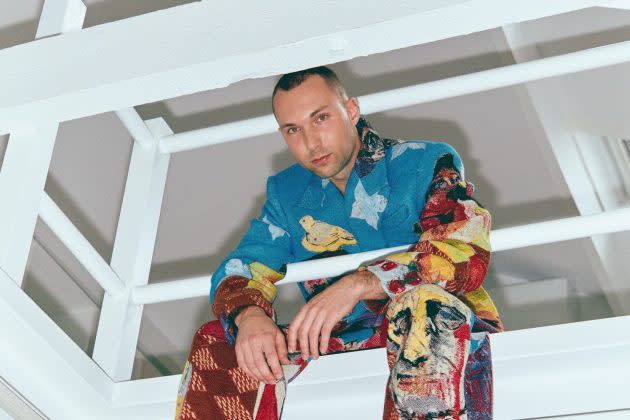
MILAN — Much to the chagrin perhaps of digital-art skeptics, one artist has charmed the upper echelons of the physical design world.
Things started to sizzle when Andrés Reisinger, the digital artist who has evolved into a visual artist and is famous for works like “Pollen” and “The Shipping,” saw his Hortensia armchair become an actual piece of furniture in 2019, a feat that few digital designers have achieved. In addition, Pollen evolved into the Pollination of Hortensia carpets for Dutch lifestyle brand Moooi, launched during Milan Design Week 2023.
More from WWD
Reisinger, who told WWD that he enjoys both digital and tangible art, has continued to see his career rise over the last year.
One of the highlights of Milan Design Week 2024 was his large-scale experiential exhibition “12 Chairs for Meditation,” co-curated with Nilufar’s founder Nina Yashar, who made his monumental mosaic, crafted by Mexican artisans, the centerpiece of her main event.
In cathedral-worthy glory, the work rose six meters depicting a surreal celestial sky with 12 levitating apples. A total of 24 mosaic artists at Mosaicos Venecianos de Mexico, which was founded in Cuernavaca in 1949 during the Mexican Muralist Movement, hand cut and shaped each single piece of glass. It took one month to complete the whole work, they said, adding that it was a pleasant surprise when the talented young artist walked into their studio.
“We had a great responsibility to transform the magical realism of the digital into mosaics, transforming into a completely different media. The crew of mosaic artists was divided into groups, some to work on the fabrication of the apples and the others to work on the different shades of blues, light pinks and purples to the different shapes of clouds,” a spokesman for the artisan firm told WWD.
Yashar said she and Reisinger first worked together on “The Odyssey” exhibition that showcased his Shipping collection, a series of digital artworks that featured physical counterparts for some of the pieces. “I found this interplay both ingenious and refreshingly novel. I believe Andrés’ success as a digital artist can be attributed to his ability to craft his creations as components of the human experience, even if they were created in the fabric of the digital space,” Yashar said.
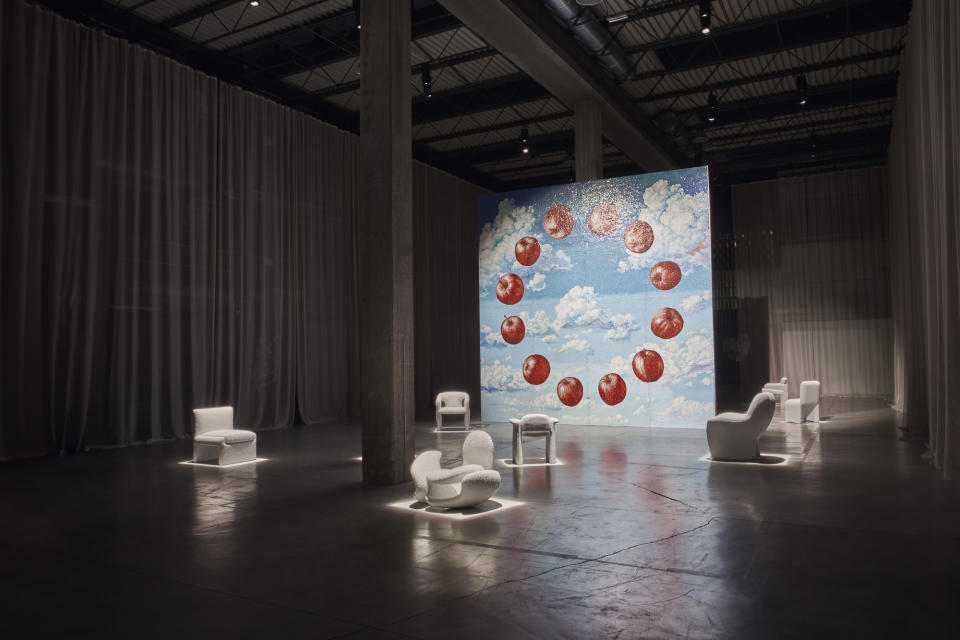
Earlier this month, Reisinger also made huge strides as the Vitra Museum cut the ribbon on an exhibit illustrating the fascinating dialogue between science fiction and design at the Vitra Schaudepot. The 34-year-old Buenos Aires native curated the exhibition design of “Science Fiction Design: From Space Age to Metaverse” with more than 100 objects from the museum’s collection, staged in a futuristic display and supplemented by selected works from the realms of film and literature, presenting a range of examples from the early 20th century to the so-called Space Age of the 1960s and ’70s.
Vitra Museum suggested that Reisinger’s digital artworks, often featuring furniture, attain a higher level of attention when they are marketed as NFTs. His Shipping Series (2021) and his Hortensia Chair (2018), were initially developed as an NFT before being produced as an actual piece of furniture. According to the museum’s curators, Reisinger was the right person to tell the history of sci-fi.
“Combining digital and analogue approaches, his work is not only innovative as a designer of objects displayed in our new exhibition, but also as an exhibition designer. For us as a museum focusing on furniture, this is particularly fascinating because it is the dialogue between science fiction and design that is the subject of the new exhibition in the Vitra Schaudepot,” said Susanne Graner, one of the curators of the exhibition and Vitra Design Museum’s head of collection and archive.
In the fashion world, fashion brand Nahmias and Reisinger connected over Instagram DM and in February, the artist saw his otherworldly digital works “Pollen,” “Take Over” and “Blush” come to life through an array of streetwear-style looks, running the gamut from patchwork jeans to a two-piece suit.
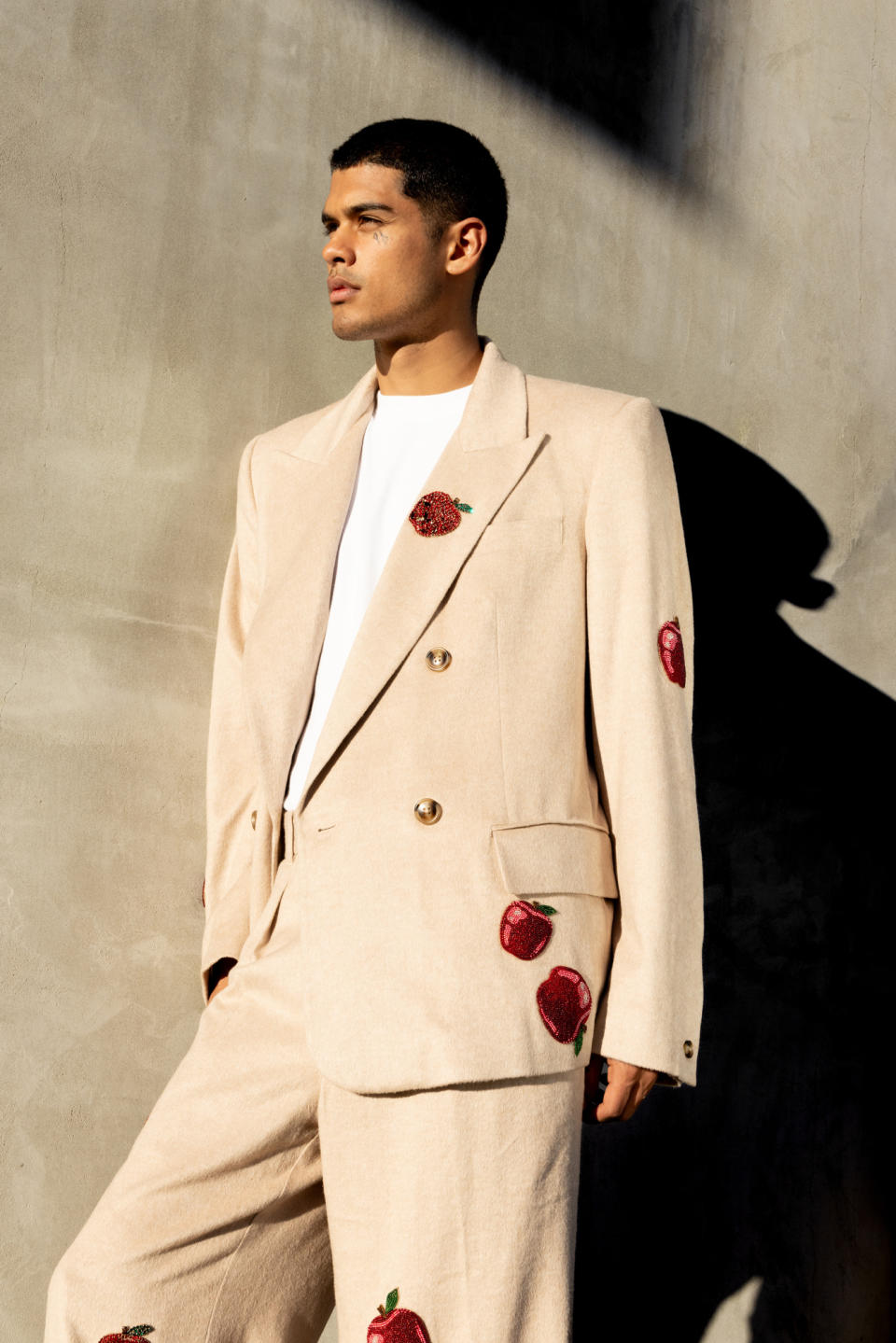
Italy-based Golden Goose in April collaborated with Reisinger for its 60th Venice Biennale in Haus of Dreamers. Haus of Dreamers is an all-encompassing cultural concept and event for which Reisinger envisaged an installation characterized by his tactile drapery for a fully sensorial experience.
“Key to his success at a young age is the ability to make people dream and feel something distinctive through his highly recognizable art whether it’s physical or digital. At Golden and with Haus, we want to push boundaries between the physical and digital worlds, for a fully integrated experience,” the company said.
Here, Reisinger talks to WWD about his first big break and how he broke down the boundaries of digital art:
WWD: When did you first start producing art? Was your family supportive?
Andrés Reisinger: From a very young age, though I can’t pinpoint the exact moment. I just know that while all my friends were playing video games I wanted to create the worlds those video games were taking place in. I began tinkering with digital tools almost instinctively, feeling a natural affinity for them from the start. My family has always been incredibly supportive and was just as curious as I was in seeing this journey develop — I believe they recognized my commitment and dedication from the outset.
WWD: When did you start experimenting with digital art?
A.R.: From that very moment I was drawn to digital tools, I remember a desire to explore and extract from them as much as possible. It was my early teenage years.
WWD: Is sci-fi part of your own aesthetic?
A.R.: I wouldn’t say intentionally, but rather a spontaneous inclination. Much of my work, along with the tools I use, naturally exude a sci-fi aura. They often embody that hyper-realistic aesthetic reminiscent of a future not too distant from our own reality.
WWD: Where did you first encounter sci-fi?
A.R.: From a very young age and for as long as I can remember. It’s one of those genres that, whether embraced or not, are such an integral part of any culture, day to day and upbringing. It is in its unique ability to inspire dreams and provoke visions of the future. I distinctly remember the first time I read the work of Jorge Luis Borges I was completely entranced by the world he had created. I think compared to other genres it offers a vivid sense of exploration, of being part of a journey through time.
WWD: Who are some artists you look up to?
A.R.: I admire numerous talents, not limited to artists, both contemporary and historical. I particularly draw inspiration from philosophy and literature. Similarly, I approach my work by first developing it theoretically before manifesting it physically. My inspiration stems from theories and ideas, shaping the artwork’s form and substance. What defines my work most profoundly is the intricate and captivating processes of nature, endlessly fascinating because of their complexity.
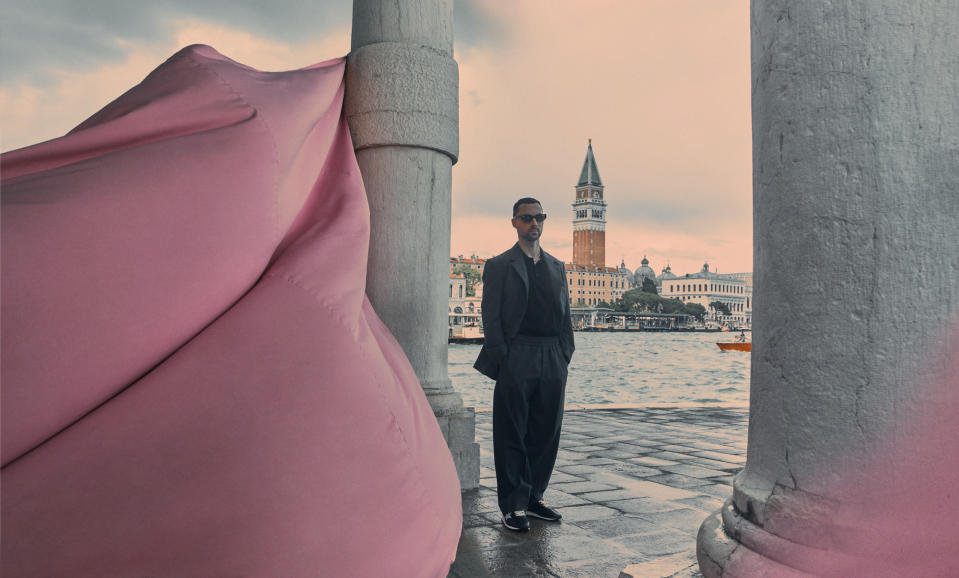
WWD: What was the cosmic shift in your career?
A.R.: The pivotal years were from 2019 to 2021, marked by the birth and evolution of “Hortensia.” Originally a digital art piece in 2018, it transformed into a physical reality in collaboration with [Barcelona-based designer] Julia Esque, culminating in a limited-edition collection first showcased at Montoya Gallery in Barcelona in 2019. These and the following years were transformative for my artistic career, and so many played crucial roles in its development. Among them are my collectors, Julia Esque herself, Rossana Orlandi for featuring “Hortensia” in her gallery’s collection, as well as dear friends and supporters like Pablo Rodriguez-Fraile and Desire Casoni, cofounders of RF.C Art, who have backed my work from the outset. Additionally, the support and guidance of Ximena Caminos, partner and creative director of the Faena Group, and Nina Yashar, founder of Nilufar Gallery, have been nothing short of instrumental in giving life to the hybrid dimension I always envisioned.
WWD: Why do you keep a low profile?
A.R.: It’s subjective and it depends on what you mean with “low profile.” I am very active on social media, which has always been my preferred platform due to its ability to reach a wide audience simultaneously. But I prioritize my personal time and space, particularly for my family. Life in the studio is hectic, yet I am someone who feels the most inspired in a tranquil environment. This inclination is why I’ve embraced meditation; it’s through clarity, rather than abundance, that I find the ability to perceive things.
WWD: You are one of the first artists to make digital art a reality, sometimes more beautiful in real life. Why do you think this is possible?
A.R.: I think it’s because I create without a predetermined destination of where my art needs to live. The essence behind each piece holds greater significance to me. When I create, I view it not as a finished product but as something born, capable of evolving and continuing its existence in various forms. There are no limits set for myself or the artwork. I attribute this fluidity to the deeply human experience from which my work originates. It’s this profound humanity that allows for diverse translations and expressions of my art.
WWD: This Is your first big exhibit. Why was the time now and with Vitra?
A.R.: There’s often both a reason and no reason for a particular time and place. I’ve long admired the Vitra Design Museum and its role in preserving and promoting design as a pivotal cultural artifact. We’ve collaborated in the past as the museum acquired my Hortensia as part of their permanent collection. These recent years have been marked by enriching projects, one notable example being “Take Over,” which similarly to “Hortensia” made a significant impact perhaps even on a larger scale. Shifting gears once in a while, such as taking on the role of exhibition design and artistic direction for this exhibition, allows for a different viewpoint focusing on the work of others rather than solely my own. The exhibition’s theme, in its vision of the future, resonated with my own work and hence made it a perfect alignment.
WWD: Sci fi, no matter what the year is, always appears futuristic or in the far-off future. We’ve never really caught up to the sci-fi aesthetic in daily life. Why do you think that is?
A.R.: I don’t think science fiction is about the future; science fiction portrays a different way of entangling different timelines. For example, in one of his books Borges describes a moment where he encounters another person, and that person is himself from the past. Science fiction is not just about the future, it is far more vast.
WWD: Do you think you will always do digital art? Why or why not?
A.R.: I think I will, mainly because there is no other space in my daily life that pushes my creative and critical thinking as much as operating in the digital world does.
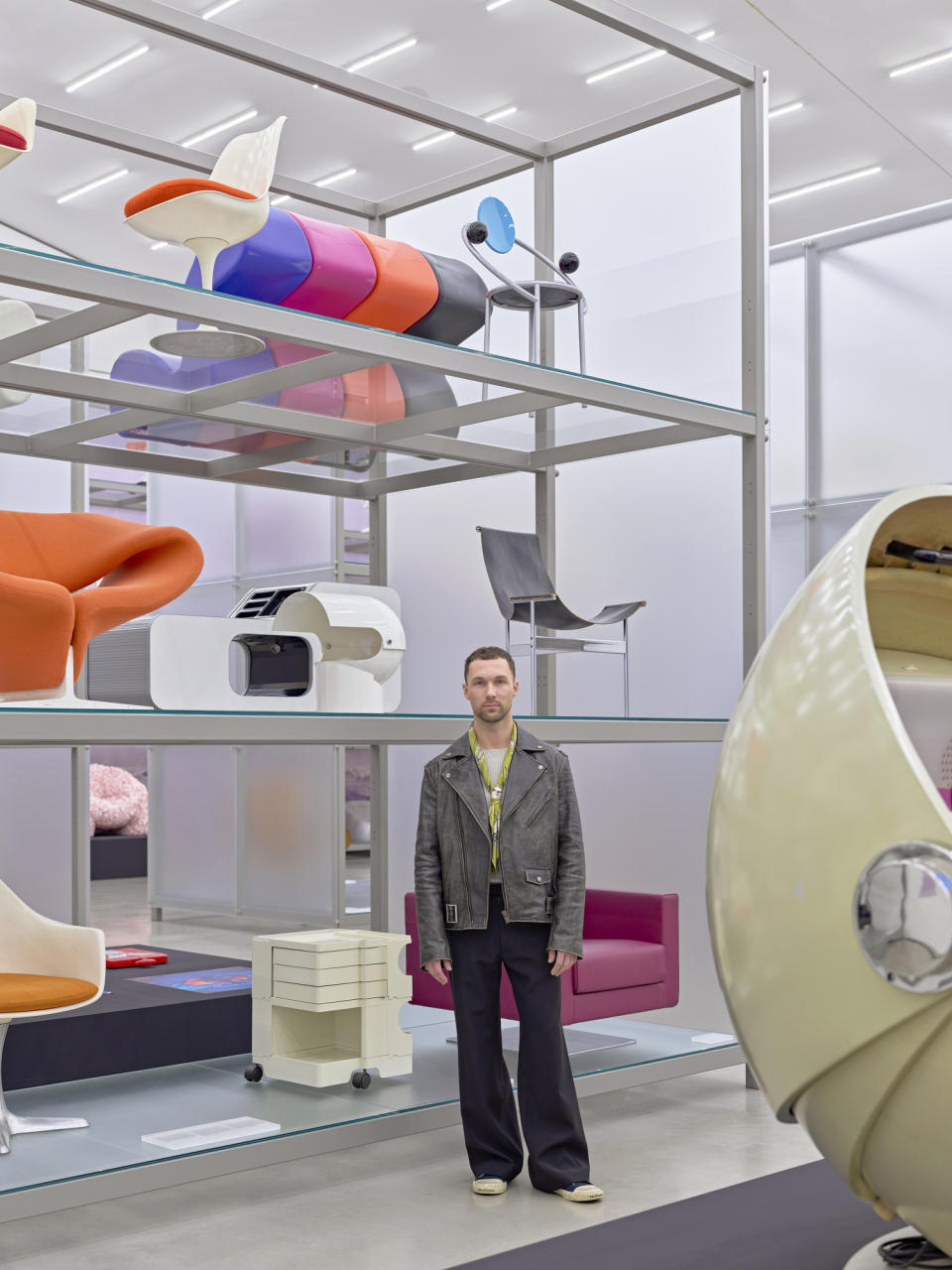
Best of WWD


